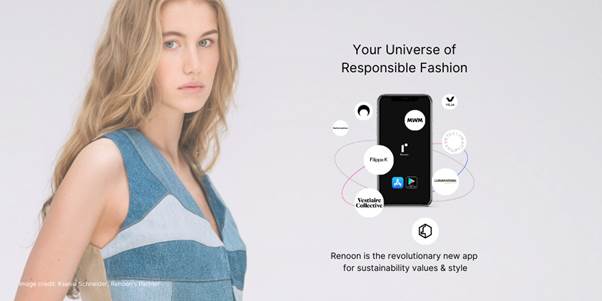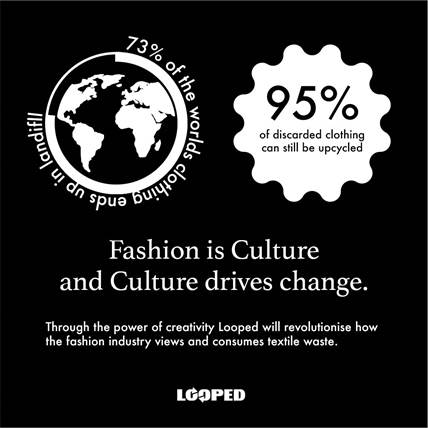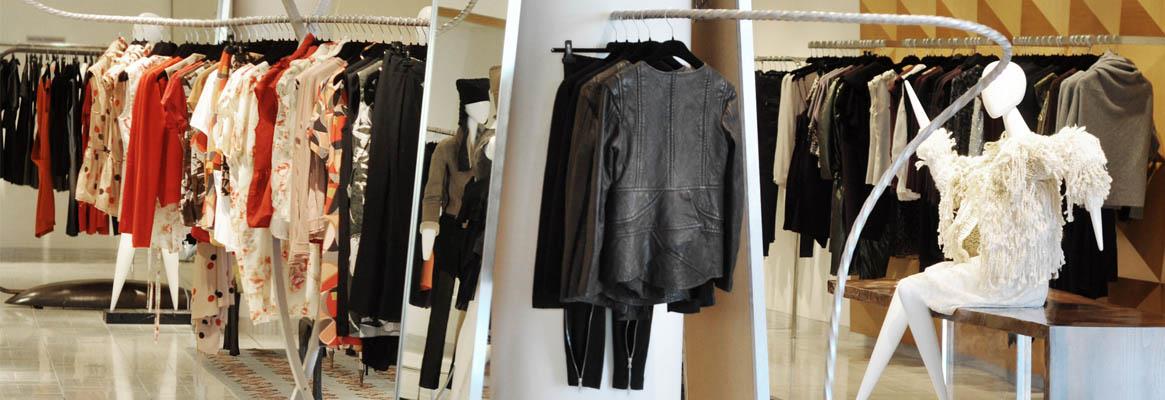COVID-19 and the digital disruption accelerated the expectations of the customers towards their shopping behaviour and brand preferences that challenged the way in which the traditional shopping experience existed before. This revolution is going to reshape the entire customer journey and customer experience even at the end of the pandemic. For this reason, retailers need to react to the current situation embracing the change and to evaluate new approaches, experiences and technologies.
Just to give a better perspective of how the situation is changing so quickly, let’s have a look at the UK market, where online sales surpassed offline sales over the last 12 months, and one-fourth of the adults citizens purchased online and one-third are going to repeat their experience in the future. Now the 90 per cent of British citizens aged under 34 years old did fashion shopping online vs 64 per cent aged over 65 years old. And this trend is not going to change.
This particular market data highlight that for a retailer today it is not possible anymore to talk about digital first generations and it is necessary to rethink all the customer engagement, the marketing and the services (from customer experience to payment systems and delivery).
Nowadays, consumers expect to interact, to be engaged and entertained in sophisticated phygital shopping ceremonies, rich in storytelling and selling techniques which include the use of new ways of communications, service centralisation of pre- and post-purchase sustained by an intelligent use of data. This implies that a company must invest not only in technology, but also in employees trainings to get the most over their investments.
So what is the customer journey and how is it changing the way we consume?
In order to start a process of change management, a fashion brand/retailer must start to make a detailed analysis of the most recent trends in their particular industry and markets, analysing their customer base behaviour in all the touchpoints activated to identify the areas for improvement, then make a projection between how the brand is perceived in the market versus the targeted image and profits expected and make a plan accordingly, plus also take inspiration to innovate in certain areas not yet covered by its competitors.
What are the ingredients for an effective customer experience?
The attention must be paid and improved in areas such as touchpoints, processes, technologies and services among their level of availability and relevance in-store and online. The experience today is played in a convergent dimension which consider the physical and the online dimension. Both are not competing between themselves, but they are a continuum towards various touchpoints in the customer decision process during the purchase journey and later on for its satisfaction and loyalty. It is important to be consistent in focusing on a customer-first approach and to serve brand-rich storytelling at every step of the customer journey to generate more opportunities.
The common link between all of them is the connection, the integration and the frictionless approach. Connected retail with mobile experience have become a must: a friendly UX design to facilitate users to discover, simplified checkout flows and continuous app updates, easy navigation and clearer presentation of product details, plus the adoption of other features that enable consumer interaction with the brand in more personal ways. This past year, amid store closures, we saw an explosion of augmented reality apps, immersive branded games, virtual store experiences, live-streamed events from the stores, live chat with in-store experts, accelerated curbside pickup, drone deliveries (in the US) and much more.
A part from the classic CRM emails, sms notifications and social media or interactive digital catalogues on a mobile device, which are some emerging omnichannel technologies to enhance the shopping experience?
Own-Kind.com is a B2B2C social commerce platform for fashion retailers that matches stylists, brands and customers. This solution provides a website plugin to turn web traffic into information-rich leads for the retail sales team. The customer has to fill all his personal information on sizing and style preferences to get the service. This process allows to create bespoke looks for each customer, with the option to include also the customer’s own items for an optimised match and send the proposals to them via text, WhatsApp or e-mail by the retail sales team. It’s like a smart wardrobe, a virtual personal styling solution able to create outfits for the sales team in less than 1 minute; 25X times faster than ppt or InDesign. The outfit comes as a white-label PDF and can include payment links, redirects to your website and booking links for in-store appointments. The app serves also as a customer black book for the sales team, as all clients profiles are stored conveniently to view what customers have bought, declined and previously owned, and manage customer relationships from the palm of their hand to drive future sales.
With the current restrictions due to COVID-19, video content is booming. According to Adweek, over 75 million people access Facebook’s video platform each day and 82 per cent of all consumer internet traffic will consist of video. Youtube, has reported that it hosts over 2 billion active users per day that watch about 1 billion hours’ worth of video. These trends are definitely here to stay, because once it starts to be an habit, consumers start to evaluate positively the advantages of online/omnichannel shopping.
That is why many brands opted for interactive solutions based on live streaming social commerce and social showrooming for their selling ceremony, where creators, influencers and ambassadors of the brand can interact directly with customers and promoting the products, visiting virtually the store (with the use of smart glasses), scheduling real visits in-store later and receive all the information before buying on the e-commerce.
So social media platforms work heavily to compete in social selling and betting on an emotional approach, because the so-called webrooming discovery starts online. In fact, social commerce in the US is expected to rise by 34 per cent this year to $36 billion and grew by per cent in 2020, according to eMarketer.
To make online shopping funnier, Facebook and Instagram have a special reward programme dedicated to content creators using AR technologies for shoppable ads that is called Spark AR Studio.
On IG, the brands can see data and insights from every sponsored Reels and Live post that they’re tagged in. Influencers have access to insights on the posts they tag and the brands can view analytics around performance, engagement and reach. This feature follows the launch of Drops in the app, which is located at the top of Shop tab. Drops are a newer e-commerce concept which help sellers create buzz for forthcoming limited-edition products in the days and weeks leading up to their availability. The products themselves are often only available in limited supplies or for a short period of time, increasing demand.
Tiktok, the most downloaded app of the last months, is the favourite channel of Millennials and GenZ. It is born to host influencers to sell online and its shoppable ads are integrated with Shopify, probably the most famous e-commerce platform at the moment. Everything is managed via Shopify’s dashboard, including ad creation, targeting (gender, age, user behaviour and video category), optimisation and tracking. A quick scan of the hashtag #tiktokmademebuyit, which now has more than 3.1 billion views on TikTok, will show you how many users have been inspired to buy something, based on what they have seen on the app.
Pinterest also launched a rotating two-week curated online shop of exclusive products from DTC brands. Pinterest’s shoppable pages saw a 200 per cent increase in engagement between March 2020 and March 2021, while product uploads from merchants are up 14X in the same time period.
Google instead is working on a product listings solutions to be released in the near future on Youtube. The features available will include: videos, AR-try on ads, product tags based on AI image recognition, video-clips which could be either manually added by creators, or eventually, automatically deleted via Google’s evolving image recognition systems.
Even for D2C brands and local retailers with smaller budgets the need for visibility is on top, especially in recent times. A presence online means to have a consistent marketing strategy online. Whoever wants to own a store without visitors?
To monetise the digital investments there are multiple options such as affiliate marketing, search engine presence, price-finder comparison engines and Google ads, Google shopping, Facebook and IG ads. But not all the solutions fits the same for every brand; every traffic driver must be tested.
An interesting proven solution is offered by the affiliate product marketing finder networks which work as a collector of different products which can be selected and filtered by country, style, colour, material, pricing, delivery options, etc. Once the visitor clicks on the product details, it is immediately redirected to the brand e-commerce and the fee over the conversion is recognised to this traffic driver.
Acting as a virtual mall, Shopthelook.it is a EU fashion network and a portal of shopping recommendations to discover new products. With the aim to sustain local shop owners and emerging brands to grow in their online sales, Shopthelook innovates the shopping experience, offering an intelligent link builder which helps the e-commerce websites to receive a better ranking on Google search, an influencer network to perform referrals campaigns that can extend their reach in the market and a frictionless discovery for the customers.
On the backend, Shopthelook is a simple CMS that can be easily adopted by local businesses, as its intuitive management is easy to use and can be managed directly by the store managers and sales assistants. Influencers can benefit from a pre-negotiated relationship with brands and a dashboard showing their performance to report the influencers sales conversions with their partners for a transparent ROI monitoring.
Shopthelook’s performance marketing sales platform is based on AI, the influencers can post their contents tagging directly the products displayed on the affiliate network.
The platform reported that viewers reported an high engagement rate. In fact, Shopthelook.it can account of over 1,000 views a day with over 5 Mio products indexed.
For sustainable fashion brands niche there is a dedicated mobile app & search engine called Renoon.com which aggregates the best offers, featuring the products details and highlighting the brands concepts.
Since its launch in 2020, Renoon has aggregated over 1,000 products of over 200 sustainable fashion brands such as Stella McCartney and dedicated multibrands such as Luisa Via Roma and Vestiaire Collective. It is the ideal destination for conscious consumers that are willing to make social impactful shopping, easy to browse using different filtering options. In fact, annually, apparel manufacturing releases around 1.2 billion tons of greenhouse gases. One truckload of clothes is either sent to landfills or burned every second. And only 1 per cent of clothes are recycled into new ones. All these factors are increasing the sensitiveness for customers to focus on sustainability.
The products and brands indexed by Renoon.com app (available on Google Play and Apple Store) can vary from famous designers to emerging talents and they are selected from a fixed framework of sustainable criteria that includes the environmental impact, organic and recycled materials, ethical threatment of labour and fair wages in the fashion manufacturing plant, pre-owned clothing and accessories.
All the selection is done through proprietary technologies developed by Renoon, which cover the automatic processing of sustainability attributes and certificates of clothing. This applies not only to the fashion brands in particular, but also to the specific products.

Moreover, for all the circular business lovers, upcycled fashion victims and designers, soon it will be launched a new marketplace for sustainable emerging brands called Looped.earth.
Looped is the result of the growing shift to consumer-driven, on-demand production and the end of mass consumption. Astonishingly, 400 billion square metres of textiles are produced annually, of which 60 billion square metres are left on the cutting room floor and the need to react to climate-change has become urgent than ever. That’s why upcycled fashion is a need and a growing market in which discarded textiles are cycled back to become source materials for new garments respecting the environment.
In that way, emerging conscious designers will find a place to scout and buy rare quality upcycled fabrics coming from excess in productions of luxury brands, to produce new bespoke styles to be sold on this marketplace. The final consumers will browse to find unique limited collections to purchase, knowing that water waste and chemical impact on the environment caused by the manufacturing operation is limited and also, they can be part of a community of people sharing the same values.

The live streaming fever explained
Live streaming, initially used for gaming in China, has outperformed as a powerful sales driver and spread over Western countries during the last year. With more than 400 million online viewers in total, live streaming in China has become the most popular video format according to The Chinese Livestreaming Report. With over 200 livestreaming platforms focusing on different markets and viewers, livestreaming can function as a powerful marketing tool at an extremely low cost.
As a matter of fact, famous e-commerce platform such as Taobao (started in 2016 and now possessing 80 per cent of Chinese livestream traffic), TMall, Baidu and JD.com (in partnership with Kuaishou) were among the first innovators, but nowadays it is possible to make a choice between multiple providers and channels. Douyin, the Chinese version of TikTok, and MOGU—a leading Chinese fashion platform—have shoppable livestreams between the app.
Livestreaming can be associated to e-commerce assuming the form of live commerce and in China it is estimated to represent a business worth $60 billion annually with peaks registering during particular online events, such as during The 11.11 Global Shopping Festival 2020 $6 billion in sales, of which $2 billion in Gross Merchandising Volume done by Alibaba only (source: Alibaba’s blog). Clearly, not all the countries will have the same performances and also cultural and economic differences must be taken into consideration. Anyway given the initial positive results in Western markets too, it is an option worth to be considered.
McKinsey forecasts that live-commerce-initiated sales could account for as much as 10 to 20 per cent of all e-commerce by 2026. The first product category showcased in live commerce are apparel and fashion, with a 36 per cent share.
It is simply another way for brands to gain appeal, awareness and differentiation, move excess inventory, and for small local businesses from craft artisans to independent designers, to reach new customers. Another important common driver is the acceleration offered between the awareness to purchase in customers decision journey that is validating the relationship with the existing customer base and expanding it to a new market segment.
The target audience of live commerce is young and some companies reported an increase by up to 20 per cent.
Live commerce can be performed influencers, KOLs or KOCs. One example of such a KOL is the Chinese Viya, who broke her own sales record driving 353 million RMB (roughly $49.7 million) in sales in a single day. On the contrary, the so called “Associate Livestreaming” can be performed by trained internal employees from the boutique or a showroom.
The opportunity is so rich that even Amazon launched Live Services, incoporating live streaming services for its vendors. The company launched the livestreaming platform in February 2019, when it also introduced Amazon Live Creator, an app that let brands stream video content directly on the site. Amazon Live followed other video-centric offerings such as the introduction of “sponsored” video placements for Prime Pantry ( a premium service of Amazon Prime) that showed product commercials. Prime Pantry is an attribution tool that lets advertisers compare how effective ads on its sites are versus those on other sites (insights from display, search or video ads outside of Amazon based on page views, purchase rate, sales and other metrics).
To livestream on Amazon instead, influencers need to belong to the Amazon Influencer Program, which requires approval from the company, based on a review of a candidate’s number of followers and other engagement numbers on YouTube, Instagram, Twitter or Facebook.
Also Google is offering this service via Youtube. In order to increase product discovery on the channel and to delete any customer friction to the online shopping, YouTube announced that soon it is beginning a new test of in-stream shopping within live streams, as part of the ongoing expansion of its creator monetisation and e-commerce tools.This development allows viewers to browse and shop products in real time, without interruption.
Youtube can be a powerful product driver: 33 per cent of shoppers say that they’ve purchased products that they discovered on YouTube, while watch time of shopping videos with “sale” in the title has increased by more than 400 per cent just in 2018 (Source: Google statistics). TikTok experimented something similar before, with the app partnering with Walmart on several live shopping broadcasts.
Live streaming appeals also to Malls
Last year, Suntec City, a shopping center in downtown Singapore, hosted Shopfest, their first ever live streamed event. With the COVID-19-driven cancellation of the Great Singapore Sale, an annual in-person sales event featuring concerts, food stalls, and of course deals galore, Singaporeans were missing out on a key retail extravaganza in their calendars. Suntec City decided to fill the void by offering a live event in which, every night from June 23rd to 26th, shoppers could log on to the Suntec app, see new products presented by hosts and purchase them through the app.
For brands and retailers opting for a private ownership of marketing and sales data, there are other dedicated bespoke solutions such as Shopform. Shopform is a B2C social commerce platform for fashion and lifestyle brands useful for discovering, shopping and sharing small and medium fashion brands, so as to help brands to grow through community empowerment, encouraging sales.
Other interesting solutions in livestreaming personal shopping are:
- Bambuser, which is a live streaming solution integrated to Facebook and Youtube, CRM and booking systems with an average add-to cart in-stream of per cent and 24 per cent chat engagement;
- Livestorm is a browser-based platform, providing all-in-one video engagement to manage online events from end-to-end. It is the ideal solution for on-demand, live or pre-recorded online events. Its intuitive and frictionless platform host brand events from desktop or mobile, supporting all of the workflows around video engagement including registration pages, invitations, email follow-ups, and dashboard analytics.
Deep tech solutions applied to video-streaming to manage the entire data lifecycle on top of streaming platforms seem crucial for those companies that are betting heavily on social selling to improve sales, but also for smart manufacturing purposes. An interesting startup operating in data analytics is Radicalbeat. It offers a solution called Radicalbit Natural Analytics (RNA) which is a DataOps platform for Streaming Data Integration and Real-time Advanced Analytics. Ideal for smart manufacturing because it can accelerate the time to market thanks to insightful business insights and AI, machine learning technologies.
The search for a direct relationship with the customer to match better his preferences is a choice that has appeal for even emerging fashion brands. For instance, NextStyler, is a startup proposing itself with a new made in Italy fashion brand called “Maison Academia”. Through a dedicated platform, Maison Academia launches new collections created by emerging stylists led by a panel of industry experts. The project aims to have a social impact encouraging new Italian talents: aspiring designers put their sketches online and a community of user-fashion lovers votes for them. Later on the best creations are then put into production and sold in the online shop.
As e-commerce strengthens its hold on consumers, brick-and-mortar stores are being forced to rethink the way they do business. The need to create a customer experience that’s unique, fresh, exciting and cannot be reproduced in the virtual world is leading to the launch of future-type stores that leverage the power of information technology to enhance the customer shopping experience smoothly, while offsetting potential labour shortages.
As the contemporary retail concepts focus on service, luxury and engagement or speed, convenience, the unique opportunity to try, touch, and feel products are being introduced in state-of-the-art stores that use electronics, sensors, and software to create an enhanced customer experience.
Tap Scan is a technology that allows brands and retailers to provide rich and immersive digital brand experiences at the point of sale. Scannable technology is also a sustainable choice, because it can also reduce unnecessary packaging, since the product information does not need to be printed on paper, card or plastic; it lives behind the scannable code and consumers access it on their own device. The information can be consumed on a user device after scanning the item using simply an app that uses object recognition technology to identify the product and show all the options for personalisation, or simply for an intelligent on-demand stock management (sizes, materials, production traceability information, colours...).
Another example of efficient tech in supply chain management, efficient workflow integration and improved customer experience that connects bricks and mortar shops with branded website and apps has been implemented by Zara. This app feature called Store Mode allows customers to check for the product availability into any store online. The roll-out started from the UK. The omnichannel shopping experience is customised to only show the products and sizes that are physically available in that specific store, allowing shoppers to manage efficiently their search and time, by checking bricks and mortar store stock in real time through the Zara app and website. Shoppers can purchase items via Store Mode and pick up in store on the same day via Store Mode’s Click & Go function. Click & Go items can be collected in store using a QR code after 11.30 am and are ready within 30 minutes. The Click & Find function is based on geolocation to allow shoppers to find specific items in store using maps. The last Store Mode function is Click & Try which allows the app users to book fitting rooms, which are reserved for five minutes and accessed using QR codes.
Depending on the scale of a business, brands and retailers have now multiple possibilities at their fingertips – even with limited budgets – to make their sales process more actual to reach audiences and to grow in sales. The analysis of data is certainly crucial in this digital transformation process and also it is recommended a different approach based on a consistent long term strategy.
Click here to read Part-I of the article.
Click here to read Part-III of the article.











Comments